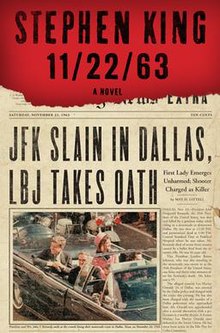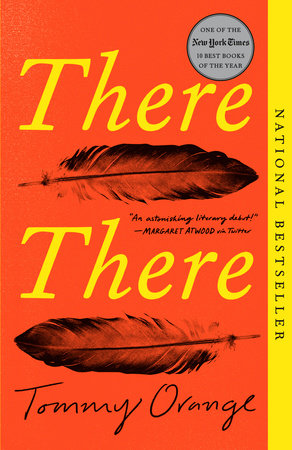As the halfway mark of the year flies past, it is time once again to take stock of my reading habits. As I wrote in my Q1 round up, I am making a conscious effort this year to read in a way that expands my horizons, reduces stress, challenges me, and improves my mental health. My pace slowed a bit these past three months compared to the beginning of the year, and will no doubt slow again when Angela and I have a baby in a month; part of the challenge of developing more healthy reading habits for me is to steer away from judging myself based on volume read, and instead placing value on what I am reading and whose voices I am seeking.
So, what have I read this year so far? Why have I chosen the books I have? Are they helpful, healthy, diverse reading choices? What will I read next?

13. Beloved by Toni Morrison
Why?: This is another book that has been on my To Be Read list for ages, and I finally got around to it. It is a perennial contender for many arbitrary colloquial titles, including the “Great American Novel”, “Top 10 Works of Fiction”, and the like. It seems to be one of those books that everyone is supposed to read, and so I read it.
Health check: African American authors often have praise of their work delivered alongside the qualifier of their race. “Toni Morrison is one of the greatest black writers in the history of American literature” is something that has and will be written and expressed many times; however, no one would ever say that “John Steinbeck is one of the greatest white writers in the history of American literature”. For some reason we feel a need to qualify the greatness of writers of colour by their race. But Toni Morrison is not simply one of the greatest black writers in history. She is one of the greatest writers ever to work in the English language. She is one of the greatest writers in history. Period. That she is black, and tells stories of the black experience, is simply the lens through which her greatness is manifested. Her excellence and her drive to rise above those who would relegate her to a separate category based on the colour of her skin means that those stories have found an audience that may otherwise have remained ignorant. Her race is not a qualifier. It earns her no bonus points. She gets to be a part of the conversation around greatness because she writes the best books. And Beloved is no different. It was well worth the read.

14. 11/22/63 by Stephen King
Why?: I still have not read every Stephen King novel, despite having been a Constant Reader for more than 15 years. This one has been high on my priority list for a long time, based on friends’ recommendations and just how different the premise is from his usual dark fare. Plus, even in a year where I am trying to focus on diversity and reading widely, I cannot go a year without the King.
Health check: After a dense and difficult read like Beloved, it was nice to return to something intimately familiar. King’s work is so comforting, even when it is edge-of-your-seat suspenseful and exciting, as I found 11/22/63 to be. While this ends up being another point in the “old white guy” column, this book diversified my reading in other ways – primarily by branching into sub-genres of sci-fi and time travel that I generally don’t choose to read. And (much to my great relief), King absolutely nails his time travel rules and systems. Few things bother me more than poorly conceived time travel dynamics with cheesecloth logic and exploitable paradoxes. King’s is well-considered and tight, and allowed me to stay in this world for all 800+ pages.

15. The Little Prince by Antoine de Saint-Exupéry
Why?: Somehow this masterpiece has largely escaped my notice. I have been aware of it for a long time, and that some people talk about its importance in the same way that I talk about Peter Pan. I found myself in a bookstore with an hour to kill before an event, and so I picked it up, found a chair, and read it cover-to-cover while I waited.
Health check: I am delighted to have finally read this excellent little book. I will need to find a copy and read it many more times to fully digest all it has to say, but even on a first pass it knocked my socks off. Simply wonderful. In terms of “healthy reading,” this book was like a green juice for my mind.

16. Brief Chronicle of Another Stupid Heartbreak by Adi Alsaid
Why?: Adi Alsaid is one of my favourite YA authors. He is the most capable of capturing what it really feels like to be a teenager (particularly a teenager in love). Every time he releases a new book, it jumps to the top of my stack.
Health check: As usual, Alsaid has written a book that stayed with me well beyond the last page. He prioritizes representation without making it feel wedged in for appearances. He writes engaging and flawed characters. He treats his audience as intelligent, and never writes down to them. I remain a huge fan.

17. The Orenda by Joseph Boyden
Why?: Following the findings of the National Inquiry into Missing and Murdered Indigenous Women and Girls that Canada has been and continues to perpetrate a race-based genocide against Indigenous people, I wanted to make sure that I spent some time this year with books by Indigenous authors and about the experience of First Nations citizens. I wish I had been a bit more thorough in my research, as I discovered later that Joseph Boyden has had his ties to Indigenous ancestry called into question. Nevertheless, this book is undeniably about the tragedies that followed the Columbian exchange, and the legacy of bad faith that lives on today.
Health check: While I did not love the “both-sidesmanship” that Boyden employs here, blurring the lines between victim and victor, I appreciated the book for its historical accuracy and the vivid way in which the author was able to bring 17th-century Ontario to life. It was, in my opinion, too long by a third, but it was a deep and important work.
18. There There by Tommy Orange
Why: Again, my goal here is to expand and increase my engagement with Indigenous artists, stories, and issues. There There was highly praised and made a lot of must-read lists, and so I added it to mine.
Health check: Inevitably, reading this back-to-back with The Orenda, I cannot help but see it in contrast and comparison to that book. Both are reckonings of the Indigenous experience in North America; Boyden through historical fiction of the Jesuits and the Huron, and Orange through contemporary fiction of the so-called “Urban Indians” of Oakland. Both focus on Native traditions of storytelling, the importance of tribal identity, and the destructive inheritance of the Columbian Exchange. That is about where the similarities end and, viewed side-by-side, my preference was for There There. The efficiency of language, the pacing, and the can’t-look-away inevitability of the climactic disaster made this a compulsive read for me. As with any converging-narratives book, some of the storylines gripped me more than others. But on the whole, the honesty and vulnerability of this book felt vitally important to our specific moment of reckoning with the atrocities committed against Native populations by centuries of white colonialism.
19. Fifth Business by Robertson Davies
Why?: Another priority for me is to read books by Canadian authors. Fifth Business is consistently listed alongside the likes of “Anne of Green Gables” as the quintessential works of Canadian fiction. I found a used copy for next to nothing, so I picked it up.
Health check: I have read a very small number of PERFECT books in my life, but this is one of them. This perfectly wrought, immaculately written novel is one that will take up my thoughts for a long time to come. It is the sort of book that makes me wonder why anyone else has tried to write anything ever since – surely Davies has discovered the Platonic Form of the Novel, and everything else is merely a shadow on a cave wall. Without a hint of irony, it is easily among the five greatest books I have ever read.
20. The Hate U Give by Angie Thomas
Why?: This book has been the talk of the YA world since its release. It stayed at the top of the NYT Bestseller list for some insane number of weeks. It takes an unflinching look at one of the great social ills of 21st century America. It is, simply put, a must-read.
Health check: There is a time for the lovelorn whimsy of Adi Alsaid’s Brief Chronicle of Another Stupid Heartbreak, and there is another time for the don’t-look-away honesty and devastation of Angie Thomas’ The Hate U Give. I couldn’t read books with this much raw emotion all the time – it would be draining beyond belief. But it was important and truly a privilege to read this book, at this moment, and allow myself to feel the rage and sorrow and helplessness for a while.

21. What To Expect The First Year by Heidi Murkoff
Why?: Simply put, I will soon be responsible for caring for a very small human who cannot care for themselves, and I don’t want to mess it up.
Health check: Parenting books are a mixed bag – it is important to read widely and to take everything with a grain of salt. It seems to me the best strategy is to gather information from all perspectives that will enable each parent to make the best choices for them. That is what Heidi Murkoff does so well in this book. She does not advise, she presents. On each separate topic, she presents multiple schools of thought, alongside statistics and anecdotes, and encourages the reader to make their own decisions. I left it feeling much more confident than I did going in. I can do this.
***
Summary
Books read so far: 21
Books by Canadian authors: 3
Genre diversity:
- Fiction (General) – 9
- Narrative nonfiction – 3
- Children’s Fantasy – 3
- Nonfiction (General) – 3
- Young Adult – 2
- Western – 1
Gender breakdown (Authors):
- Women – 8
- Men – 13
- Nonbinary – 0
Ethnic breakdown (Authors):
- White – 15
- Black – 2
- Indigenous – 2 (disputed; Joseph Boyden’s claim to Native Canadian ancestry has been questioned)
- Latin American – 1
- Jewish – 1
Half the year down, half still to go. I am excited, looking at my to-be-read pile and seeing the literary adventures that are ahead. With my goals firmly in mind, I am off to explore new horizons.




Pingback: Resolutions Revisited: 2019 – An Awfully Big Adventure